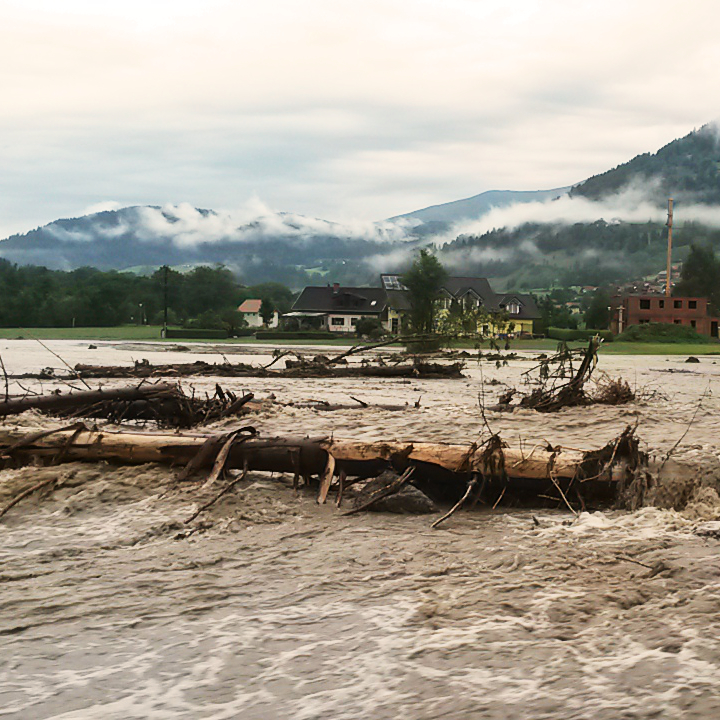
Restoration of floodplains and floodplain forests, natural succession
Identifying and re-establishing of flood plains and deposition areas, such as by removal of protection structures for agricultural land, contributes to the retention of water along rivers and, thus, to heavy rain risk reduction. In the past, most floodplains have been taken over for other uses; former floodplain forests are separated from river and runoff pathways and modified into residual low-density forests without natural regeneration. Land use of flood plains can be different. Most space is required by self-regenerating floodplain forests (“mobile ecosystems”) – much more than floodplain grassland or reed beds. Restoration of such forests is a demanding and long-lasting process and requires planning; however, it is a crucial measure for climate change adaptation and mitigation.
Check out the RAINMAN good practice examples:
no good practice example available
READ MORE:
- Office International de l’Eau (2015): Natural Water Retention Measures, URL: http://nwrm.eu (19.03.2020): forest riparian buffers
- Bundesministerium für Land- und Forstwirtschaft, Umwelt und Wasserwirtschaft (Ed.) (2015): 1. Nationaler Hochwasserrisikomanagementplan [The first National Flood Risk Management Plan for Austria], URL: https://www.bmlrt.gv.at/wasser/wisa/hochwasserrisiko/rmp2015/risikomanagementplan/risikomanagementplan.html (22.06.2020): Überflutungsgebiete und Ablagerungsgebiete wieder herstellen
- Landesamt für Umwelt, Landwirtschaft und Geologie (Ed.) (2016): Dezentraler Hochwasserschutz im ländlichen Raum, URL: https://publikationen.sachsen.de/bdb/artikel/13555 (25.03.2020): Renaturierungen
- National Flood Risk Management measures Hungary: 1. Ártéri, hullámtéri területhasználatok módosítása művelési ág váltással, ökológiai, és természetvédelmi szempontok figyelembevételével; 2. A növényzet átalakítása és fenntartása, ökológiai és természetvédelmi szempontok figyelembevételével, URL: http://www.vizugy.hu/vizstrategia/documents/81E46637-D6E2-469B-A482-298613A06132/5.%20melleklet%20AKK%20intezkedestipusok%20VKI%20szempontu%20vizsgalata.pdf
Wildbach- und Lawinenverbauung (WLV)


